Often, what constitutes deplorable behavior is determined by the sociocultural and sociopolitical norms of a particular time period. All of the people on this list were publicly condemned in their own time for offenses that most people would consider forgivable within the societal value systems of contemporary Western culture. But in their time, they suffered for reasons often beyond their control…
10. Alan Turing
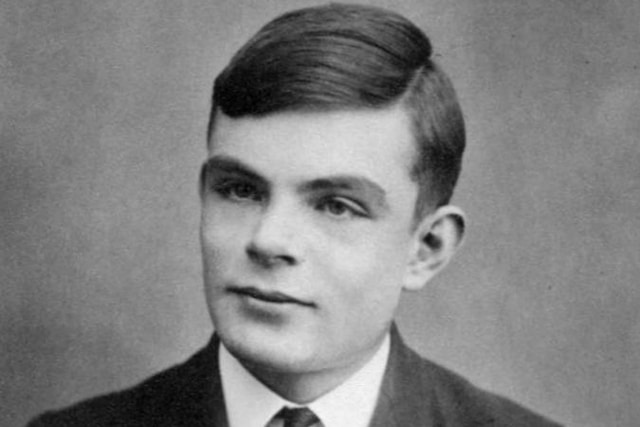
British mathematician Alan Turing developed a test that could arguably be used to demonstrate the vulnerabilities of artificial intelligence, and he did it before the contemporary concept of artificial intelligence even existed. In the Turing Test, a human judge who is placed in isolation has two conversations, one with a human and one with a machine. If the judge cannot determine which of his or her fellow conversationalists is human, then the machine has passed the Turing Test. Critics of contemporary artificial intelligence technology may actually take solace in Turing’s work. As of 2020, no machine has passed the Turing Test.
Turing was most famous for his work as a cryptanalyst (codebreaker) during World War II. He decoded the German army’s cipher machine, Enigma. A cipher is a message wherein letters in individual words or phrases have been changed to ensure secrecy. Enigma’s messages were doubly encrypted. The words in the original messages were replaced with code words, and then the coded messages were turned into ciphers. Historians estimate Turing’s work shortened the war by two years, and he saved 14 million lives. His achievements were celebrated in the 2001 movie Enigma.
If Turing’s work was famous, his personal life was infamous. He was convicted of “gross indecency” for his consensual sexual relationship with a 19-year-old man. (“Gross indecency” was the British legal term for homosexuality. Homosexuality was illegal in Britain until Parliament passed the Sexual Offenses Act of 1967.) Upon his conviction, Turing was sentenced to chemical castration, a physically painful and emotionally damaging “treatment” intended to suppress his sexual urges. In 1954, he commited suicide by cyanide poisoning. In 2013, he was posthumously pardoned by Queen Elizabeth II. The 2014 movie The Imitation Game is a celebratory, sympathetic portrayal of Turing’s life.
9. Humphrey Bogart
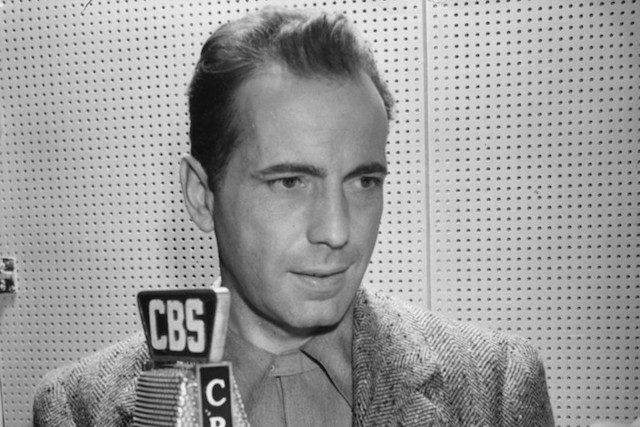
The House Un-American Activities Committee (HUAC) was formed by members of the American Congress’ House of Representatives in 1938. Those members were dedicated to finding Communists in America. As the Cold War between USSR and the United States intensified, communists in America were unfairly represented as valuing Russia’s sociocultural and sociopolitical goals more than America’s. From 1939 to 1945, HUAC subpoenaed any public figures whom its members suspected of surveillance on behalf of the Russians or membership in the American Communist Party. “Friendly” witnesses provided committee members with the names of professional colleagues who might be Communists. “Unfriendly” witnesses refused to provide the committee with information.
Leading man Humphrey Bogart, played over 75 roles during his film career. In 1999, the American Film Institute named him the Greatest Male Screen Legend Of All Time. However, in his lifetime Bogart’s reputation suffered when he defended the Hollywood Ten, ten artists the House Committee accused of being practicing communists, subpoenaed, and questioned. Bogart believed HUAC’s questions were aggressive and misleading, especially when the committee was dealing with “unfriendly” witnesses. In October 1947, Bogart and 24 other artists who believed HUAC’s questioning violated the Hollywood Ten’s First Amendment rights formed the Committee For The First Amendment and marched on Washington in support of the Hollywood Ten. Nine members of the Hollywood Ten were jailed in 1950; one became a “friendly” witness for HUAC. All of the artists who were jailed were blacklisted. Many of those who supported them were blacklisted as well. Though Bogart was questioned by the committee and cleared, he never could successfully disavow his association with the Communist Party… even though he wasn’t actually associated with it. The blacklisting ended in 1960, when Dalton Trumbo, one of the Hollywood Ten, was credited (under a pseudonym) as the screenwriter on the movie, Spartacus. Unfortunately, Bogart died in 1957.
8. Oscar Wilde
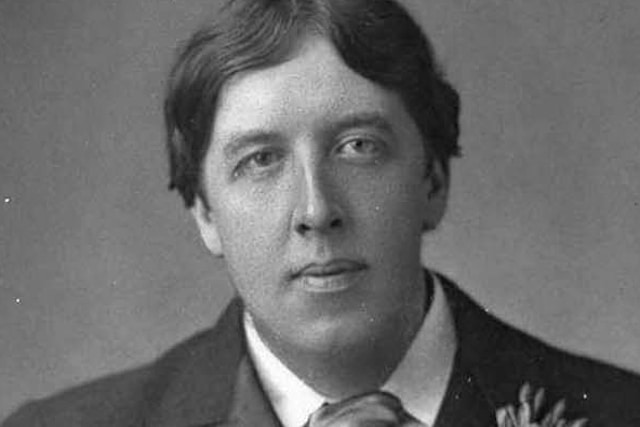
In 2014, Irish author Oscar Wilde was named the most quotable author of humorous quotations by The Oxford Dictionary Of Humorous Quotations. Wilde’s work was popular in his own time as well. His glib wit and his sparkling social satires thrilled British audiences, despite the fact that he had not been born into the British aristocracy he satirized. A flamboyant public figure, Wilde flaunted his love for young men. As previously mentioned, homosexuality was illegal in England until 1967. When the father of Wilde’s lover, the Lord Alfred “Bosie” Douglas, left a card in Wilde’s hotel room accusing Wilde of “posing as a somdomite” (misspelling his accusation), Bosie urged Wilde to sue Bosie’s father, the Marquis of Queensbury, for libel.
Unfortunately for Wilde, witnesses called during the ensuing three trials proved Queensbury’s accusation was accurate. Wilde was convicted of “gross indecency” in 1895, and he was sentenced to two years of hard labor. After his release from prison in 1897, he lived in penury in Paris until his death in 1900. The Wilde trials are sometimes credited with influencing contemporary stereotypes of homosexual men, since the trials publicly labeled the garrulous, lavishly dressed Wilde as a man who loved men.
7. Monica Lewinsky

Did you know that Monica Lewinsky’s name has appeared in over 125 rap songs? Most U.S. citizens first heard Lewinsky’s name in 1998, when information leaked to the press about her consensual affair with her boss, then U.S. president, Bill Clinton. Clinton lied under oath when he was asked whether he had had an affair with Lewinsky. Clinton was asked about Lewinsky as part of his deposition when he was sued by Paula Jones, a former employee of the Arkansas state government, who accused Clinton of sexual misconduct. The fact that Clinton lied under oath was an issue in his impeachment trial, a trial in which Lewinsky testified via video. During the televised impeachment trial, intimate details of Clinton’s affair with his intern were revealed to the American public. Late night comedians relentlessly mocked Lewinsky in their routines, though Lewinsky says some of them have since expressed regret for their actions. Notably, comedian Jay Leno — who recently called for more civility in late night comedy — hasn’t apologized to Lewinsky.
Unlike most of the public figures on this list, Lewinsky did not have a public reputation of her own before Clinton’s impeachment trial. However, the maligning of her suddenly public reputation harmed her private life. In an interview with Last Week Tonight host John Oliver, Lewinsky said that negative press coverage affected her relationships with her family members, her mental and emotional health, and her professional opportunities. Her former experiences inform her current work. She staunchly advocates against bullying and public shaming on social media.
6. J. Robert Oppenheimer

As one member of the Manhattan Project, American physicist J. Robert Oppenheimer is largely responsible for one of the most efficient technological innovations in America’s history, the atomic bomb that the U.S. military dropped on the Japanese cities of Hiroshima and Nagasaki during World War II. Now, many Americans find the use of the atomic bomb controversial, but that was not the case in Oppenheimer’s own time. According to a Gallup poll in 1945, 85% of Americans approved of the dropping of the atomic bomb. By contrast, a 2015 Pew Research poll found 56% of Americans believed the dropping of the atomic bomb was justified. Given Americans’ popular support for the use of atomic power in the mid-20th century, it’s notable that, as mentioned in a previous list, Oppenheimer himself opposed the use of the technology he helped to develop.
After watching the first successful atomic bomb explosion at the Trinity test site in Alamogordo, New Mexico, Oppenheimer said, “I remembered the line from the Hindu scripture, the Bhagavad-Gita, ‘Now I am become Death, the destroyer of worlds.’” After the atomic bombs were dropped, Oppenheimer unsuccessfully urged U.S. president Harry Truman to implement international controls on the use of nuclear power. While working as a member of the U.S. Atomic Energy Commission, a commission dedicated to controlling the use of nuclear weapons, Oppenheimer refused Truman’s request to work on the development of a hydrogen bomb. Oppenheimer’s commitment to his personal principles cost him his job. He was blacklisted, falsely accused of holding communist sympathies, and removed from his position.
5. Paul Robeson

American stage and film actor Paul Robeson’s majestic presence and deep baritone enriched many plays and films. Unlike most of the public figures on this list, Robeson was publicly disgraced twice. In 1943, Robeson became the first black man to play the role of Othello on Broadway in Shakespeare’s play of the same name, when he was cast in a Theatre Guild production. Robeson and his co-star, the American actress Uta Hagan, who played Othello’s wife, Desdemona, were the first interracial couple to kiss on an American stage — an act that was illegal in 1940s America. Robeson and Hagan were both blacklisted.
Nonetheless, Robeson and Hagan’s production of Othello remains the longest running production of a Shakespeare play to appear on Broadway. Like many other mid-20th century public figures on this list, Robeson was persecuted by the U.S. government for his publicly avowed socialist sympathies and his activism in support of socioeconomically disadvantaged groups, such as Welsh miners and American blacks. While testifying in front of the House Un-American Activities Committee, Robeson defended his socialist ideology. His reputation and career were irreparably damaged, despite his never having been a member of the Communist Party.
4. Ethel Rosenberg

Julius and Ethel Rosenberg were accused of spying for the Soviet Union. They were convicted of 11 counts of conspiracy to commit espionage and sentenced to death. They both died in the electric chair on March 29, 1951. They were the first Americans to be convicted of espionage and sentenced to death during peace time. The Cold War between the United States of America and the Soviet Union was brutal, but neither country officially declared war on the other. Since the Rosenbergs’ surviving sons, Michael and Robert Merepol (both of whom have taken their adoptive family’s surname) sued the FBI and the CIA under the Freedom of Information Act and demanded the declassification of U.S. intelligence records about their parents, it is possible to verify that Julius Rosenberg recruited Soviet spies and stole U.S. military secrets.
However, there are no U.S. intelligence documents incriminating Julius Rosenberg’s wife, Ethel, in any conspiracy. She likely knew about Julius’ recruitment activities, but there is no record of her participation. Her brother, David Greenglass, testified during the Rosenbergs’ trial that Ethel typed notes Julius passed to the Soviets. Greenglass later recanted his testimony, saying he gave false evidence in order to spare his accused wife, because his wife was more important to him than his sister. The Merepols have campaigned for the U.S. government to posthumously exonerate their mother, but their efforts have been unsuccessful. Morton Sobell, who was convicted in 1951 after admitting he was a part of Julius Rosenberg’s Soviet spy ring, said Ethel was guilty of, “being Julius’ wife.”
3. Anne Boleyn
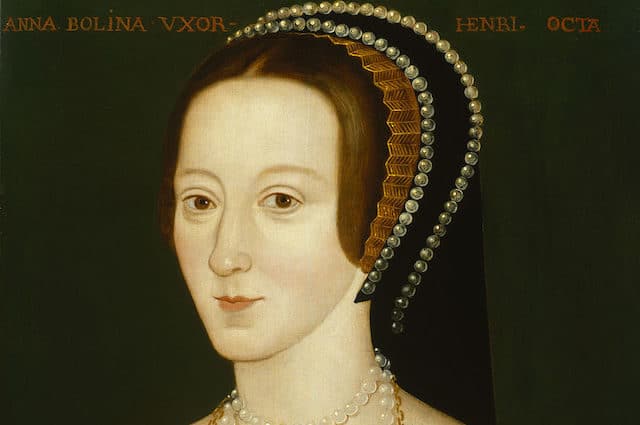
Anne Boleyn, the second of King Henry VIII’s six ill-fated wives, may be the most famous (and infamous) mistress in English history. When Pope Clement VII refused to annul his marriage to his Catholic, Spanish queen Catherine of Aragon (so that he could marry the Protestant, English Anne), Henry broke his ties with the Catholic church and formed the Church of England rather than give up Anne Boleyn — and the possibility that she could provide him with the son and heir Catherine hadn’t yet produced. Boleyn is the mother of one of England’s most admired monarchs, Queen Elizabeth I, but she never gave Henry a son. In 1536, she was accused of committing adultery with several men, including her own brother.
Contemporary historians believe the only adultery she is guilty of is the adultery she committed with Henry before her marriage to him. Nonetheless, she was convicted on charges of incest, adultery, and a conspiracy to kill the king and sentenced to death by a jury that included her own uncle. She was beheaded by a French swordsman. The manner of execution was a show of deference to her rank; French swordsmen were believed to be swift and accurate executioners. Perhaps the same strength of character that made her a fascinating mistress for Henry, also made her a doomed queen. In the speech she made from the scaffold before her execution, Boleyn said that, though she was innocent of the charges brought against her, she had “not, perhaps, at all times shown him the humility and reverence that his goodness to [her…] did deserve.”
2. Galileo Galilei
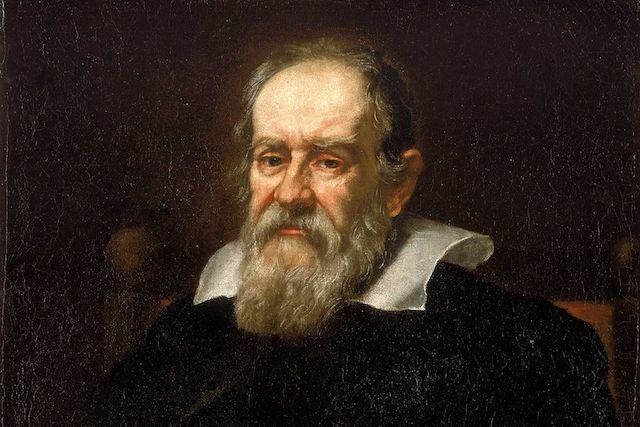
In 1609, the Italian mathematician and scientist Galileo Galilei built a telescope without the aid of a model. He accurately observed the moon’s surface, the sun’s spots, and Jupiter’s moons. Galilei’s experiments contributed to contemporary scientists’ understanding of various scientific fields, including astronomy and mechanics. However, the scientific theory that harmed his reputation wasn’t even his own. In 1614, Galilei publicly supported Polish astronomer Nicolaus Copernicus’ (correct) theory that the Earth revolved around the sun. Copernicus’ theory wasn’t new. The Greek astronomer Aristarchus of Samos proposed a heliocentric model of the galaxy circa 300 B.C.
Unlike Copernicus and Galilei, however, Aristarchus wasn’t living in a time period when the Catholic church was a social center, and Catholic ideology provided the moral and social mores of civilian life. In the medieval Catholic worldview, the Earth, which God created, was the center of the universe, and the sun revolved around it. By publicly admitting he thought otherwise, Galilei tacitly undermined the authority of the church. The church accused Galilei of heresy twice. He was tried, convicted, and sentenced to house arrest in 1633. The Catholic church did not formally admit its error until roughly 300 years after he was sentenced.
1. Emmett Till
Emmett Till is perhaps the most profoundly wronged person on this list. In 1955, 14-year-old Emmett Till traveled from Illinois to Mississippi to visit his cousin. While standing outside a convenience store with his cousin and some friends, Till, who was black, allegedly bragged to them that his girlfriend was white. The boys dared Till to go inside the convenience store and ask the woman working the counter out on a date. There were no witnesses in the store, but Carolyn Bryant — the white woman working behind the store counter — claimed Till entered, purchased candy, made lewd advances, wolf whistled at her, and coolly crooned, “Bye, baby,” as he left the store.
Unfortunately for Till, he wasn’t simply a cocky 14-year-old boy. He was a black boy in 1950s Mississippi who had spoken suggestively to a white woman. Carolyn Bryant’s husband, Ron, and his half-brother, J.W. Milam, forced Till out of his uncle’s home. Historians suspect they beat Till. Then they tied him to a wheel and drowned him in the Tallahatchie River. When his body was found days later, he was so bloated and disfigured that he could only be identified by his bracelet, which bore his initials.
When Till’s body was sent to his mother, she demanded an open casket funeral. She offered photos of her beaten boy’s bloated body to Jet, an African-American magazine, and the Jet article about Till’s death attracted the American media. Till’s assailants were acquitted by an all white jury after less than an hour of deliberation. Carolyn Bryant, the woman who accused Till of lewd behavior, recanted her statement in 2017. Arguably, there was no justice for Emmett Till, but his mother’s open casket funeral for her son ensured that Till’s face became the face of the American civil rights movement. She couldn’t save her own son, but she tried to make the world safer for the boys who came after him. As stand up comedian Dave Chappelle said in his 2018 Netflix special, Equanamity/The Bird Revelation, “In the midst of a mother’s worst nightmare, this woman had the foresight to think about everybody.”
1 Comment
Thank you for your feedback. Paul Robeson’s understanding of the Soviet Union was definitely naive. He universalized his own life experiences, those of a celebrity who wasn’t experiencing the same racism he would have experienced in the U.S. and therefore found the society much more egalitarian, in Russia as though it were Russians’. His naivete about Russia puts him on the wrong side of history, for sure, but his communism and his civil rights work (The subjects of the article) don’t. (McCarthyism, too, is on the wrong side of history.) Whether or not one condemns extramarital affairs is a personal matter. However, particularly with the rise of the #Me too movement, the media coverage of Monica Lewinsky and Hillary Clinton has now been reframed as unfairly negative compared with media coverage of Bill Clinton. In American culture, we are shifting the narrative so that the actions of powerful men who exert their authority in sexual situations should be more accountable for how they use their power. Lewinsky’s professional prospects were affected by the consensual affair in a way President Bill Clinton’s were not; we would be more likely to problematize that in our current culture. The information about how Ethel Rosenberg’s brother’s testimony against her may be unreliable, and her role in the acts that resulted in charges is also questionable, is included in the article links.